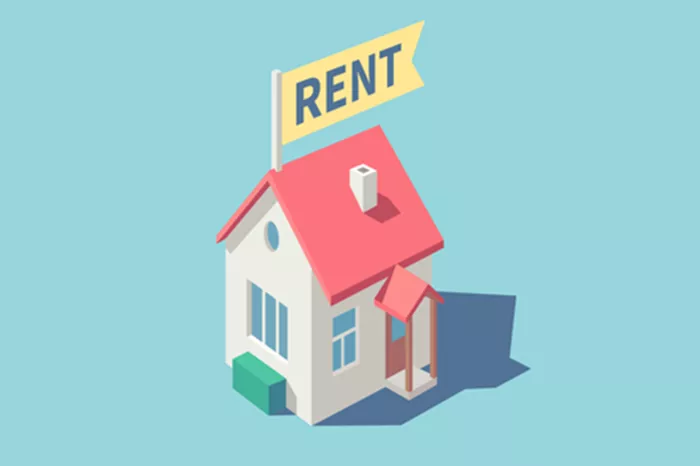When you purchase property insurance, one of the most important elements to consider is the premium. The premium is the amount you pay for your insurance coverage, and it can vary significantly depending on several factors. Understanding how to calculate your property insurance premium will help you make informed decisions, ensuring you have the right coverage at the best price.
In this guide, we’ll walk you through the process of calculating property insurance premiums, the factors involved, and provide a simple approach to help you understand the entire calculation process.
What Affects Your Property Insurance Premium?
Property insurance premiums are not fixed. Many factors influence how much you pay, and these factors can vary by insurance provider. Here’s a breakdown of the most important elements that insurance companies consider when determining your premium.
1. Property Value
One of the key factors in determining your premium is the value of the property you’re insuring. The more valuable your property, the higher your premium is likely to be. This is because the higher the value, the more expensive it would be for the insurance company to replace or repair your property in the event of a loss.
When calculating your premium, it’s essential to ensure that the property’s value is accurately assessed. This value is typically determined by considering the cost to rebuild your home or replace the property’s contents, rather than the market value or purchase price.
2. Location of the Property
The location of your property plays a significant role in the calculation of your insurance premium. If your property is in an area that is prone to natural disasters, such as floods, earthquakes, or hurricanes, your premium will likely be higher.
For example, properties located in flood zones or areas with a history of wildfires may attract higher premiums due to the increased risk of damage. On the other hand, properties in safer locations with lower risks may have lower premiums.
3. Age and Condition of the Property
The age of the property and its overall condition also have a significant impact on the cost of your property insurance. Older homes may have outdated features such as old wiring, plumbing, or roofing, which increases the risk of damage and loss. Insuring older properties typically requires higher premiums because the likelihood of a claim may be higher.
If your property is well-maintained and updated with modern systems and structures, it could help reduce your premium. Many insurance providers offer discounts for homes with updated electrical systems, fire alarms, and other safety features.
4. The Deductible Amount
The deductible is the amount you agree to pay out-of-pocket in the event of a claim before your insurance coverage kicks in. Generally, the higher your deductible, the lower your insurance premium will be. This is because the insurance company is taking on less financial risk.
On the other hand, if you opt for a lower deductible, your premium will increase. It’s important to balance affordability with risk when choosing your deductible. A higher deductible might save you money in the short term but could result in higher out-of-pocket costs if you need to file a claim.
5. Security and Safety Features
Insurance providers take into account the security and safety measures in place at your property. If your property has features such as a security system, smoke detectors, sprinkler systems, or deadbolt locks, your premium may be lower due to the reduced risk of loss or damage.
Homeowners who invest in making their property safer are often rewarded with lower premiums, as these features make it less likely that a loss will occur. Some insurance companies even offer specific discounts for homes that have advanced security measures in place.
6. Claims History
Your claims history can also affect your premium. If you have filed multiple claims in the past, insurers may consider you a higher risk and increase your premium accordingly. On the other hand, a clean claims history can work in your favor and potentially reduce your premium.
Insurance companies generally look at your past claims to determine how likely you are to make a claim in the future. If you have a history of frequent claims, they might increase your premium or even choose not to renew your policy.
7. Type of Coverage
The type and amount of coverage you choose will impact your premium. There are various types of property insurance policies, including:
Basic Coverage: Covers essential risks like fire, theft, and vandalism.
Comprehensive Coverage: Provides broader protection, including additional risks like natural disasters or accidental damage.
Liability Coverage: Offers protection if someone is injured on your property or if you damage someone else’s property.
The more comprehensive the coverage, the higher the premium. However, it’s essential to assess the risks you face to choose the appropriate coverage level for your needs.
How to Calculate Your Property Insurance Premium
Now that we understand the factors that influence property insurance premiums, let’s take a look at how to calculate your premium. While insurance companies may use different formulas, the general calculation is based on the following steps:
1. Determine the Coverage Amount
The first step in calculating your property insurance premium is determining how much coverage you need. You should calculate the total cost to rebuild or repair your property in case of damage or destruction. This figure is often referred to as the replacement cost.
If you have personal property to insure, such as furniture, electronics, and other possessions, you should include the cost to replace those as well. Make sure to include the cost of any structures on your property, such as garages, fences, and sheds.
2. Assess the Risk Factors
Once you have your coverage amount, you will need to assess the risk factors that apply to your property. This involves considering elements like the location, age, and condition of the property, as well as your security and safety features.
Your insurance company will evaluate these factors based on data, so it’s crucial to provide accurate information about your property. For example, if you live in a flood-prone area, the insurer may add a surcharge to your premium to reflect the increased risk.
3. Factor in the Deductible
Your deductible plays a critical role in the calculation of your premium. As mentioned earlier, the higher your deductible, the lower your premium will be, and vice versa. Insurers will factor in the deductible amount when determining your overall premium cost.
Make sure to choose a deductible that you’re comfortable with. If you opt for a higher deductible to lower your premium, ensure you have the funds available in case you need to pay that deductible in the event of a claim.
4. Calculate the Base Premium
The base premium is calculated by considering the coverage amount, risk factors, and deductible. Your insurance company will use this information to calculate your base premium, which is the starting point before any discounts or additional charges are applied.
5. Apply Discounts or Surcharges
Once the base premium is calculated, the insurer will apply any relevant discounts or surcharges. For example, you may qualify for a discount if you have a security system, or if you bundle multiple policies (like home and auto insurance) with the same provider.
Surcharges may apply if your property is in a high-risk area or if you have a poor claims history.
6. Final Premium
The final premium is the amount you will pay for your property insurance policy. This figure will include the base premium, plus any discounts or surcharges, and will be adjusted based on the coverage, location, and risk factors associated with your property.
Tips to Lower Your Property Insurance Premium
While there are several factors that determine your property insurance premium, there are also ways to lower the cost. Here are a few tips to help you reduce your premium:
Increase Your Deductible: Opting for a higher deductible can reduce your premium, but make sure you’re financially prepared to pay the deductible if you need to file a claim.
Bundle Your Insurance: Many insurers offer discounts if you bundle multiple policies, such as home and auto insurance, with the same provider.
Install Safety Features: Adding features like a security system, smoke detectors, and fire alarms can lower your premium by reducing the risk of loss or damage.
Maintain Your Property: Regularly maintaining your property and ensuring that it is up-to-date can help reduce the likelihood of a claim, which can result in lower premiums.
Shop Around: Different insurance companies offer different rates, so it’s important to compare quotes from multiple providers to find the best deal.
Conclusion
Understanding how to calculate your property insurance premium is crucial for making informed decisions about your coverage. By considering the factors that impact your premium, such as property value, location, and safety features, you can get the right amount of coverage at the best possible price.
Remember to shop around, assess your needs, and take advantage of discounts to keep your premiums affordable. By following these steps, you’ll be well-equipped to navigate the world of property insurance and protect your home and assets.
Related topic:
What Is Contractors Pollution Liability Insurance?




















